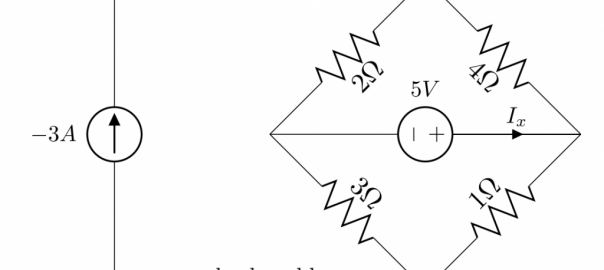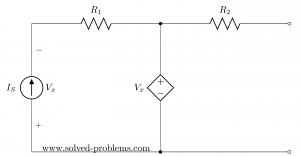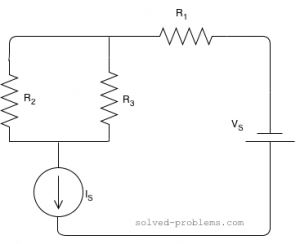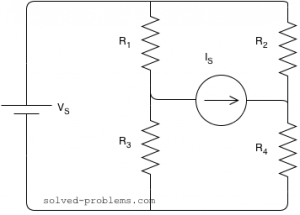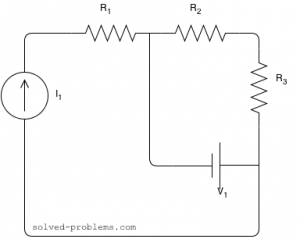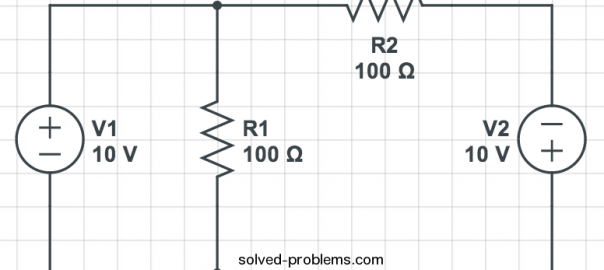Finding current by using superposition method. There are two independent sources, so we need to turn them off one by one and calculate their contributions.
Author Archives: Yaz
Find Thevenin’s and Norton’s Equivalent Circuits
Thevenin’s and Norton’s equivalent circuits of a DC resistive circuit is determined. The circuit has an independent current source and a dependent voltage s
Solve Using Current Division Rule
A DC resistive circuit with two sources, one voltage source, one current source both independent solved using current division method.
Mesh Analysis – Supermesh
The mesh analysis used to solve the circuit which has a supermesh. After solving the circuit, power of sources determined.
Solve By Source Definitions, KCL and KVL
A DC resistive circuit consisting of one voltage source and one current source and three resistors is solved using source definition, KCL and KVL.
Find Voltage Using Voltage Division Rule
Determine voltage across and using voltage division rule. Assume that , , , and Solution: Please note that the voltage division rule cannot be directly applied. This is to say that:
Find currents using KVL
A simple circuit with two voltage sources and two resistors solved using only KVL.
Total Energy Stored – Circuit with Capacitors and Inductors
Total energy stored in a circuit is calculated by finding the energy stored in each capacitor and each inductor and adding them up. The circuit has two capacitors, two inductors and two independent dc sources.
Thévenin’s Theorem – Circuit with Two Independent Sources
Thévenin’s Theorem is deployed to solve a simple circuit which contains two independent sources. The solution is explained step-by-step.
Thévenin’s Theorem – Circuit with An Independent Source
Thevenin’s Theorem is deployed to solve a quite simple circuit with only one independent voltage source. The solution is explained step-by-step.
